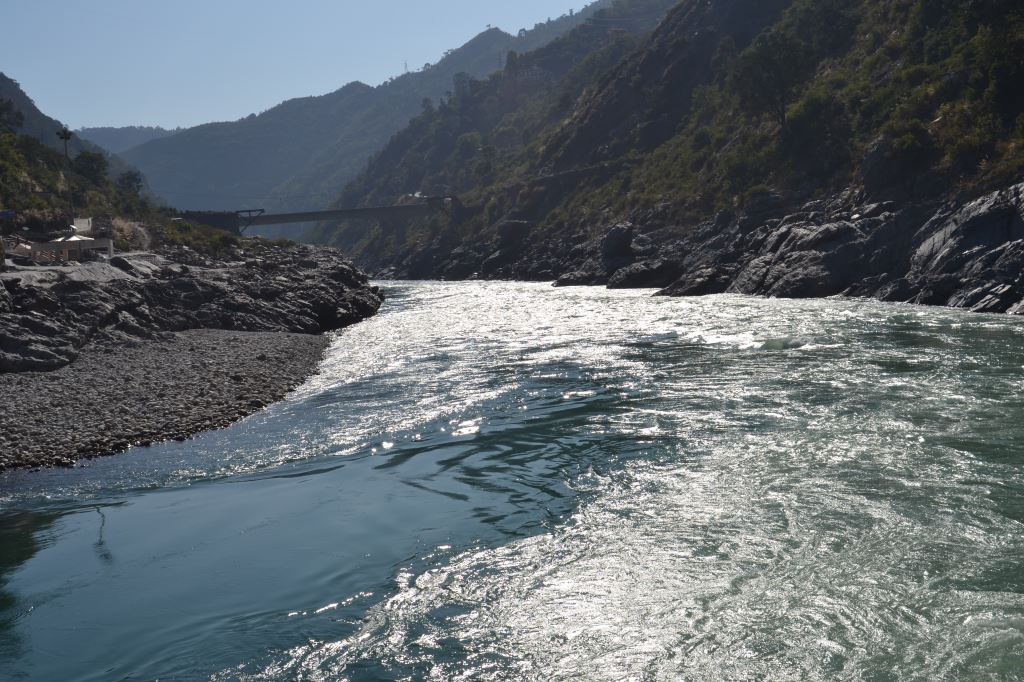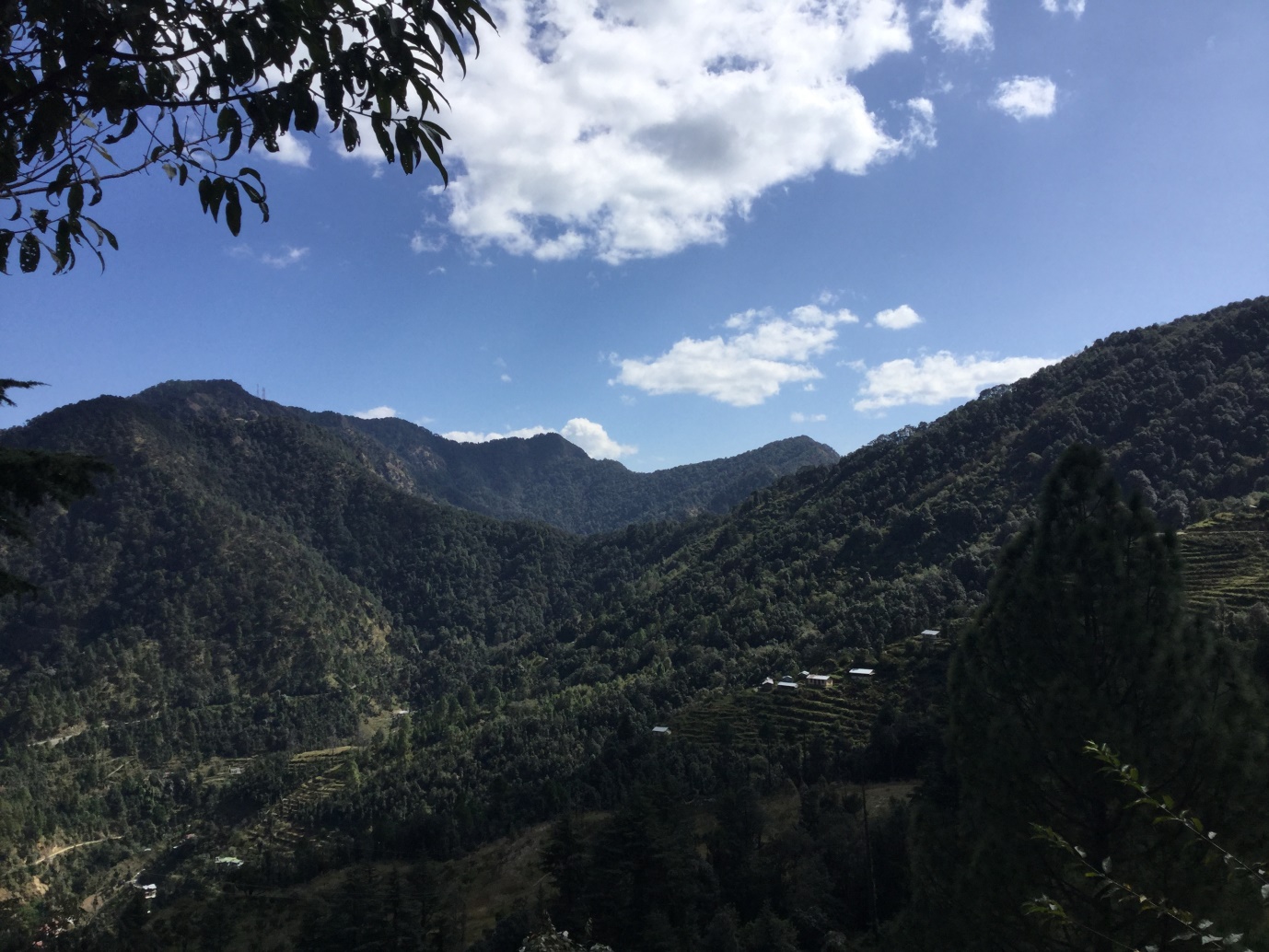
Whenever it rains heavily, people of Raini village in Uttarakhand spend their nights huddled together in a place safe from the water. Their fear arises from the repeated disasters that have marked this region, impacting property and lives.
Located at an altitude of about 3,000 metres, just below the Nanda Devi glaciers, Raini (or Reni) is situated in Chamoli district of the northern state, close to the China border.
In February this year, the district was at the centre of a flash flood disaster, likely triggered by a glacier rupture. Over 80 bodies were recovered and over 200 missing, as per estimates from May. In mid-June this year, five days of copious rainfall, starting from June 13, had washed away a newly constructed bridge. A stretch of Joshimath-Malari highway, which connects the area to the China border, had caved in. People of 12 villages were cut off from rest of the state. Many houses developed cracks. More recently, a cloud burst incident on September 20 damaged some properties, though there was no loss of life reported.
“On heavy rain days, we all congregate at a plain surface in the night and wait for the dawn to break,” said Bhawan Rana, gram pradhan (elected head of panchayat, the village council) of Raini.
Raini has a legacy of environmental conservation, with the Chipko Movement, a non-violent uprising for forest protection, tracing its origins here. But this epicentre of history is now dotted with stories of natural disasters and relocation troubles. Recently the iconic statue of Gaura Devi, a resident of the village who was among the women that led the Chipko Movement in 1974, was shifted from Raini, to a government building in Joshimath tehsil, for safety.
Chander Singh Rana,75, son of late Gaura Devi, told Mongabay-India, “We feel a deep bond with our land of ancestors and deities which also earned global recognition for conserving environment. But now, we have to leave it to save our lives.”
Limited resources at host villages
The district administration had selected Subhai village, located just 3 km away from Raini for rehabilitation of its 50 families, according to sub-divisional magistrate of Joshimath, Kumkum Joshi. But due to stiff opposition of Subhai residents, the whole procedure came to a standstill.
“We have already accommodated around 60 families of two other villages relocated here in 1980s. If we allow more families, then there would be no land and water left for our grandchildren,” Ranjit Singh Negi, 53, former sarpanch (president of panchayat, the village council) of Subhai, a host village, said.
Saurabh Singh Negi, 25, whose parents shifted from Malari village to Subhai explained the perspective of those being relocated, “My parents still recount the pangs of being treated as encroachers by the host village. It took many years to get acceptance and warmth from them.”

Commenting on the rehabilitation scenario in the state, Atul Sati, a social activist, told Mongabay-India, “There are glaring loopholes in the state rehabilitation policy, which provide for compensation of Rs. 360,000 and an allocation of 100 sq ft of land to a family without adequate land for agriculture, livestock grazing etc.” Owing to this, many locals like those in Painj village of Niti valley still risk their lives in going back and forth to their disaster prone village for agriculture even after relocation, he said.
Limited resources in the villages make it harder for those who have been rehabilitated there. In Pang Muranda for example, the people who were relocated upstream about two decades ago, after the Chamoli earthquake in 1999, have to access water at night and store it in buckets for use. The original residents shut the water supply in the day time and limit it for their own consumption.
Temporary shelters not ideal
While some families are rehabilitated to other villages, many land up living life in temporary shelters like in school buildings, waiting for rehabilitation.
Sharad Singh Negi, vice-chairman of Uttarakhand Rural Development and Migration Commission told Mongabay-India, “During my Uttarakhand tour, I just happened to find many families of a disaster affected village living in a cramped condition in two-room portion of a school building in Thal area of Pithoragarh for over three years. Administrative officers provided shelter to the affected on paper, unmindful of the miseries of these families.” He said, in a state which faced shortage of schools in the rural belt, blocking school rooms for relief for a long time is not rational either.
“Our rehabilitation is due for many decades, but district administration has done nothing about it. Now they have made us stay in a school building after landslides in Jugju made our houses vulnerable. How can government and bureaucrats take border villages so lightly?” said Sangram Singh, native of Jugju village in Joshimath. Singh had earlier filed a Public Interest Litigation (PIL) in the Supreme Court against the Rishi Ganga hydroelectric project which got impacted in the February 7 disaster.
Tanuja Devi, 42, is one among 15 families whose house was partially damaged in one of heavy downpours in the lower part of Raini village. She refused to take shelter in a school building. “My life has become miserable as my house can crumble anytime. To reach the school building, I will have to navigate a bridge over the gushing river which is a dangerous proposition in monsoon. Besides this, who will take care of my cattle and belongings in my absence,” she asked.

Piyoosh Rautela, Executive Director, Disaster Mitigation and Management Centre, Government of Uttarakhand, explained that rehabilitation is a complicated process. The state is struggling with paucity of resources especially land and funds. Most of the vacant land comes under forest. Repeated pleas to the central government for funds have also not been successful.
S. A. Murugesan, Secretary, Uttarakhand State Disaster Management Authority informed that the state government has decided to allocate land from the land bank of state forest department for rehabilitation of people from disaster-prone villages.
According to a press release issued by the chief minister’s office last August, some 688 families from 25 villages were relocated between 2017-2020. As many as 395 disaster hit villages have been identified as disaster sensitive and geological surveys of 225 villages have been completed.
Abandoned village can be used for rehabilitation, recommend experts
Talking about the need to use forest area for rehabilitation, Sharad Singh Negi of Uttarakhand Rural Development and Migration Commission, said that trees in forests need not be cleared to relocate people as the state has some 1000 villages that are lying abandoned or are thinly populated with vacant houses because of migration of the inhabitants. After improvement in infrastructure, these villages can be used for rehabilitation, he suggested.
Between the 2011 Census and 2017, the Migration Commission found, in Uttarakhand, 734 villages were completely vacated by their inhabitants, while in another 565, the population fell by 50 per cent
“As a former forest official, I witnessed many success stories of rehabilitation of villages from tiger reserves such as one in Kanha Tiger Reserve. Gram panchayat and NGOs can play a pivotal role in convincing people and creating harmonious atmosphere for rehabilitation,” he said.
Anil Joshi, Founder-President of Himalayan Environmental Studies and Conservation organisation told Mongabay-India, “According to the latest Intergovernmental Panel on Climate Change assessment report, there will be more weather and climate intensive events across the globe, and the Himalaya has already been so vulnerable, so the state government needs to get its act together urgently and devise a long term strategy on rehabilitation of people from disaster prone villages and stabilisation of area vacated by people due to disaster especially in border villages for their strategic significance.”
This article has been authored by Seema Sharma. The article originally appeared in Mongabay.












